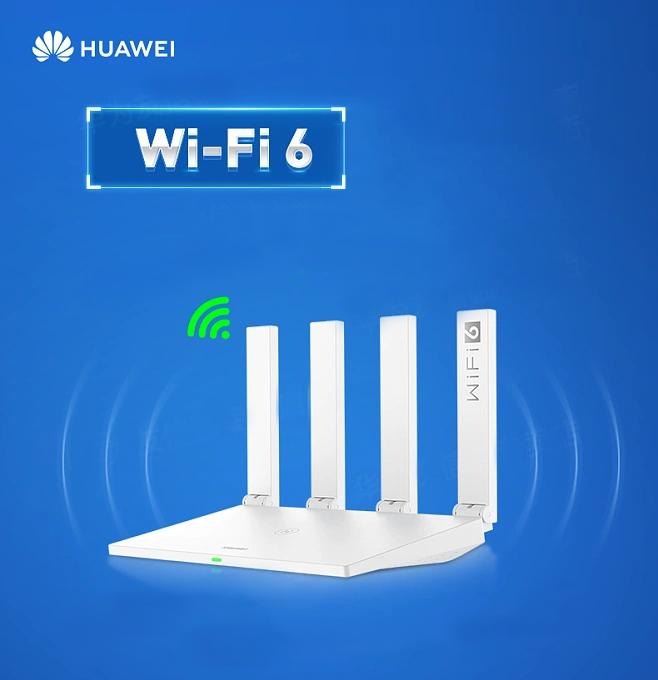Before deciding whether to replace the
Wifi 6 Router, let's first clarify a few questions:
Firstly, the phone must first support WiFi 6, and then the router provides a WiFi 6 network connection to make sense. Currently, only flagship phones from various companies support WiFi 6. If none of your family's phones support it, what's the use of buying a router. The price of this product started at around 200 yuan, and only Huawei's is relatively cheap, which is why Huawei lowered the price.
2. Currently, under the 802.11ac standard, our phones are not fully running at a single frequency band wireless rate of 1733Mbps. The speed of WiFi6, even at 6, requires 8 antennas in parallel to achieve a bandwidth of 9.6Gbps, while our phone only has a few antennas? We still cannot achieve this bandwidth. Currently, there are only 2 antennas in the terminal, and the peak bandwidth can only reach 2.4Gbps.
3. Many cheap WiFi6 routers are equipped with gigabit network ports, which cannot fully utilize the amazing wireless speed of WiFi6. The price of a gigabit electrical or optical port is too high, and economic conditions allow it. WiFi 6 Wireless Router Wifi 6 Outdoor Wireless Ap

4. Under the WiFi 6 standard, the theoretical maximum speed of 2 ^ 2MU MIMO is 2.4G, but to achieve a 2.4G speed, it is necessary to operate in the 160MHz frequency band, which requires very high mobile signal requirements. If the signal in your region cannot reach the 160MHz frequency band, then the speed is also greatly discounted. For example, in my location, mobile WiFi 6 devices often only work in the 80MHz frequency band, making me cry without tears.
Wifi 6 Ceiling Wireless Ap Overall, the high internet speed under the WiFi 6 standard will have a significant impact on our lives, but due to many limitations, we cannot fully utilize our capabilities. We need to approach it rationally. If you feel that your conditions are good, come back as a whole. If you feel that you are currently unable to meet the conditions after understanding, then wait first and don't be discouraged. The popularization of WiFi6 still requires a process.
Differences between wifi6 and previous generations
Wifi6 has a high transmission speed, with a maximum transmission rate of 9.6Gbps, which is three times that of the previous generation. But this is only a theoretical value, and this rate mainly depends on the amount of wireless signal occupied. In general, in complex daily life situations, it is difficult to achieve a rate of three times!
Frequency band increase
In terms of frequency band, the previous generation of WiFi involved 5GHz, while WiFi 6 covered 2.4/5GHz, allowing both high-speed and low-speed devices to quickly access WiFi 6. In the modulation mode, wifi6 is also higher than wifi5, with higher data capacity and faster data transmission speed, resulting in a wider coverage range of wifi.

Wider coverage
WiFi can block certain propagation when encountering obstacles, but there is a significant improvement in the signal coverage ability of WiFi 6. When transmitting over medium to long distances, it can traverse many obstacles. To a certain extent, it can reduce the interference of obstacles and enhance signal transmission.
More expensive price
At present, WiFi 6 is still in a preliminary stage of development and will be subject to certain broadband restrictions. When purchasing a WiFi 6 router, you can also consider whether there are devices at home that can connect to WiFi 6 to avoid wasting some resources.






